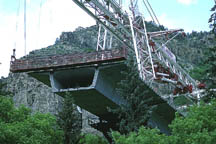STRUCTURAL ENGINEERING
Kavanagh Lecture - Abstract
April 7, 2005
Use
of Strain-Hardening Fiber Reinforced Concrete in Earthquake-Resistant
Design: Example of Shear Wall Coupling Beams
by
James K. Wight
Professor of Civil Engineering
University of Michigan
ABSTRACT
The concept of using steel, glass or other man-made fibers to enhance the tensile properties of concrete
has been under investigation for the last fifty years. Considerable
advances have been made in understanding the material properties for
fiber reinforced concrete (FRC), but so far only a limited number of
structural applications have been developed for FRC. This paper will
discuss potential structural applications for normal FRC, and then
introduce the potential to use a high performance fiber reinforced
concrete (HPFRC) in the design of earthquake-resistant concrete elements.
The term “high performance” refers to a tension strain-hardening
property in the fiber reinforced concrete. The strain-hardening property
in tension makes this an excellent material for shear-critical elements
that will be subjected to load reversals during earthquake loading.
The major application to be discussed will be the use of HPFRC in coupling
beams for shear walls. Current designs call for the use of diagonal
reinforcement with heavy transverse reinforcement around the diagonal
bars. The use of HPFRC can lead to significant reductions in the required
amount of reinforcement in coupling beams, while retaining all the
required ductility and energy dissipation properties. A summary of
experimental results will be presented.

